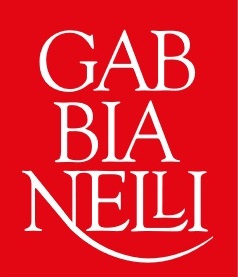 W
WCapodimonte porcelain is porcelain created by the Capodimonte porcelain manufactory, which operated in Naples, Italy, between 1743 and 1759. Capodimonte is the most outstanding factory for early Italian porcelain, the Doccia porcelain of Florence being the other main Italian factory. Capodimonte is most famous for its moulded figurines.
 W
WCozzi porcelain is porcelain made by the Cozzi factory in Venice, which operated between 1764 and 1812. Production included sculptural figurines, mostly left in plain glazed white, and tableware, mostly painted with floral designs or with figures in landscapes and buildings, in "bright but rough" colours. They were rather derivative, drawing from Meissen porcelain in particular in the early years.
 W
WThe Doccia porcelain manufactory, at Doccia, a frazione of Sesto Fiorentino, near Florence, was in theory founded in 1735 by marchese Carlo Ginori near his villa, though it does not appear to have produced wares for sale until 1746. It has remained the most important Italian porcelain factory ever since.
 W
WGabbianelli is an Italian ceramics company specialising in ceramic wall and floor tiles. It was founded in 1939 by Enrico Gabbianelli with its manufacturing plant in Cusano Milanino. During the 1960s and 70s it also produced a series of ceramic objects for the home by prominent Italian designers. The company was bought by Ceramica Bardelli in 1996, although the two companies maintained their own production and brand names. In 2000, following a further period of consolidation and restructuring in the Italian ceramics industry, Bardelli, Gabbianelli, and several other brands became subsidiaries of the Biella-based Altaeco Group.
 W
WGrazia Deruta is pottery producer in Deruta, Italy, the family business with the tradition from 1500.
 W
WLe Nove porcelain was made in the 18th century in the town now called Nove, near Bassano, then in the Republic of Venice's mainland territories, the terrafirma. It was made at a factory owned by Pasquale Antonibon, who was already making fine maiolica in fashionable styles, which continued to be made alongside the porcelain. Production of porcelain began in 1762 and ended when Antonibon died in 1773. But it resumed in 1781, when Francisco Parolin leased the factory for twenty years in a partnership with the Antonibons, known as the "Parolin period". This lasted until 1802. Production of porcelain continued intermittently until 1835.
 W
WLodi ceramics were produced in Lodi, Italy from ancient times, but their artistic quality reached its peak in the 18th century.
 W
WMedici porcelain was the first successful attempt in Europe to make imitations of Chinese porcelain, though it was soft-paste porcelain rather than the hard-paste made in Asia. The experimental manufactory housed in the Casino of San Marco in Florence existed between 1575 and 1587 under the patronage of Francesco I de' Medici, Grand Duke of Tuscany. Surviving examples are extremely rare, and the great majority of the 60-70 examples are in museums.
 W
WVezzi porcelain is porcelain made by the Vezzi porcelain factory in Venice, Italy, established in 1720 by the Vezzi family. It was the first porcelain factory in Italy, after the experimental Medici porcelain of the 16th century. It operated only until 1727, so surviving pieces are few, probably fewer than 200. It made "true" hard-paste porcelain, and was only the third factory in Europe to do so, hiring technicians from Meissen porcelain and Vienna porcelain, the first two makers.